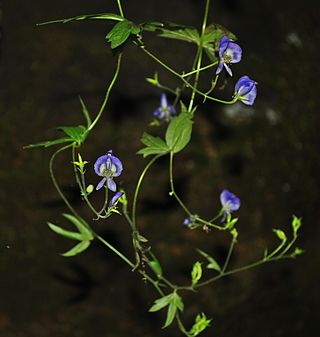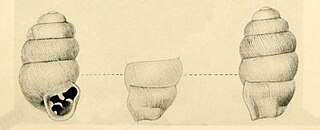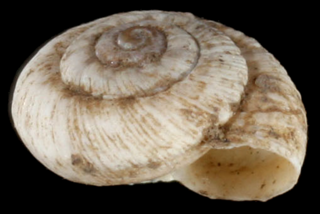
Prairies are ecosystems considered part of the temperate grasslands, savannas, and shrublands biome by ecologists, based on similar temperate climates, moderate rainfall, and a composition of grasses, herbs, and shrubs, rather than trees, as the dominant vegetation type. Temperate grassland regions include the Pampas of Argentina, Brazil and Uruguay, and the steppe of Ukraine, Russia, and Kazakhstan. Lands typically referred to as "prairie" tend to be in North America. The term encompasses the area referred to as the Interior Lowlands of Canada, the United States, and Mexico, which includes all of the Great Plains as well as the wetter, hillier land to the east.

The Driftless Area, also known as Bluff Country and the Paleozoic Plateau, is a topographical and cultural region in the Midwestern United States that comprises southwestern Wisconsin, southeastern Minnesota, northeastern Iowa, and the extreme northwestern corner of Illinois. The Driftless Area is a USDA Level III Ecoregion: Ecoregion 52. The Driftless Area takes up a large portion of the Upper Midwest forest–savanna transition. The Blufflands refers to the eastern section of the Driftless area in Minnesota, due to the steep bluffs and cliffs around the river valleys. The western half is known as the Rochester Plateau, which is flatter than the Blufflands. The Coulee Region refers to the southwestern part of the Driftless Area in Wisconsin. It is named for its numerous ravines.

Driftless Area National Wildlife Refuge is a United States National Wildlife Refuge in northeastern Iowa, southwestern Wisconsin and northwestern Illinois. It is a collection of non-contiguous parcels in the vicinity of the Upper Mississippi River National Wildlife and Fish Refuge.

Aconitum noveboracense, also known as northern blue monkshood or northern wild monkshood, is a flowering plant belonging to the buttercup family (Ranunculaceae). Members of its genus (Aconitum) are also known as wolfsbane.

The Upper Mississippi River is today the portion of the Mississippi River upstream of St. Louis, Missouri, United States, at the confluence of its main tributary, the Missouri River. Historically, it may refer to the area above the Arkansas Post, above the confluence of Ohio River, or above Cape Girardeau.

Bixby State Preserve is a nature reserve located in southwestern Clayton County, Iowa, in the midwestern United States. It is located 3 miles (4.8 km) north of Edgewood. It is operated by the Iowa Department of Natural Resources as one of the Iowa state preserves.
Roberts Creek State Preserve is located in rural Clayton County, Iowa, in Wagner Township, near St. Olaf, Iowa, and a few miles north of Elkader, Iowa. Roberts Creek is a tributary of the Turkey River.

Plethodon punctatus, commonly known as the Cow Knob salamander or white-spotted salamander, is a species of salamander in the family Plethodontidae. It is endemic to high mountain forests on the border of Virginia and West Virginia in the United States. Nearly all occurrences are on Shenandoah Mountain, Nathaniel Mountain and Great North Mountain in George Washington National Forest. Cow Knob salamanders are a member of the P. wehrlei species complex, which includes many other Appalachian salamanders historically referred to Plethodon wehrlei.

The Shenandoah salamander is a small, terrestrial salamander found exclusively in Shenandoah National Park in Virginia. The Shenandoah salamander inhabits a very small range of land on just three mountain peaks. Due to the small habitat range, interspecies competition, and climate change, the population of the Shenandoah salamander is vulnerable to extinction. Mitigating human effects on the habitat of the species will be essential in attempting to preserve and grow the population.

Algific talus slopes comprise a very rare, fragile ecosystem and habitat initially believed to exist only in the Driftless Area of Minnesota, Wisconsin, Illinois, and especially, Iowa. More recently, other algific talus slopes have been identified in the Allegheny Mountains of West Virginia. It has been suggested that close comparison with similar sites worldwide may enlarge the distribution, or that the term may become restricted to the flora and fauna characteristic of these zones within the Driftless Area.
Assiminea pecos is a rare species of snail in the family Assimineidae known by the common name Pecos assiminea. It is native to New Mexico and Texas in the United States. Specimens known from Mexico are now treated as members of a separate species, Assiminea cienegensis. The Pecos assiminea was federally listed as an endangered species of the United States in 2005.

The Chittenango ovate amber snail is a species of small air-breathing land snail in the family Succineidae, the amber snails. This species was discovered in 1905, and was reported three years later as a subspecies of the oval ambersnail, Succinea ovalis. Several taxonomic reviews took place in the subsequent decades until the end of the 1980s, when the Chittenango ovate amber snail was finally judged to be a distinct species based on chemical and morphological data.
The flat-spired three-toothed snail —also known as the Cheat three-toothed snail after the Cheat River in West Virginia—is a species of air-breathing land snail, a terrestrial pulmonate gastropod mollusk in the family Polygyridae.

Vertigo arthuri is a species of land snail in the family Vertiginidae, the whorl snails. It is known by the common names callused Vertigo, or Midwest Pleistocene Vertigo.

Minidoka National Wildlife Refuge is located on the Snake River Plain in south-central Idaho, 12 miles (19 km) northeast of Rupert. It includes about 80 miles (130 km) of shoreline around Lake Walcott, from Minidoka Dam upstream about 25 miles (40 km).

Xerocrassa geyeri is a species of air-breathing land snail, a terrestrial pulmonate gastropod mollusk in the family Geomitridae. It is also known as Trochoidea geyeri.
The White Pine Hollow State Forest is a 944-acre (382 ha) forested area in Dubuque County, Iowa. Of the forest, a 712-acre (288 ha) tract is a National Natural Landmark and Iowa State Preserve. The state forest is named after its dominant old-growth tree, the white pine. The grove is said to be the only old-growth patch of white pines still growing in Iowa. The nearest town of any size is Luxemburg.

Bayshore Blufflands State Natural Area is a Wisconsin Department of Natural Resources-designated State Natural Area of significant note for its grand scenery, unusual geology, rare plant and animal species. Containing more than 7 miles (11 km) of the Niagara Escarpment, the Bayshore Blufflands is an ecologically complex site with a diversity of plant communities both above and below the escarpment and a series of seeps and springs at the base of the bluff's talus slopes.

The relict darter is a rare species of freshwater ray-finned fish, a darter from the subfamily Etheostomatinae, part of the family Percidae, which also contains the perches, ruffes and pikeperches. It is endemic to Kentucky, where it occurs only in the drainage of the Bayou de Chien. It is a federally listed endangered species of the United States.

Chrysosplenium iowense is a species of flowering plant in the saxifrage family known by the common name Iowa golden-saxifrage. It is native to North America, where it is "primarily a Canadian species", occurring from the northern Northwest Territories south to British Columbia and east to Manitoba. There are also disjunct, relictual occurrences within the United States, in the Driftless Area of Minnesota and Iowa.



















